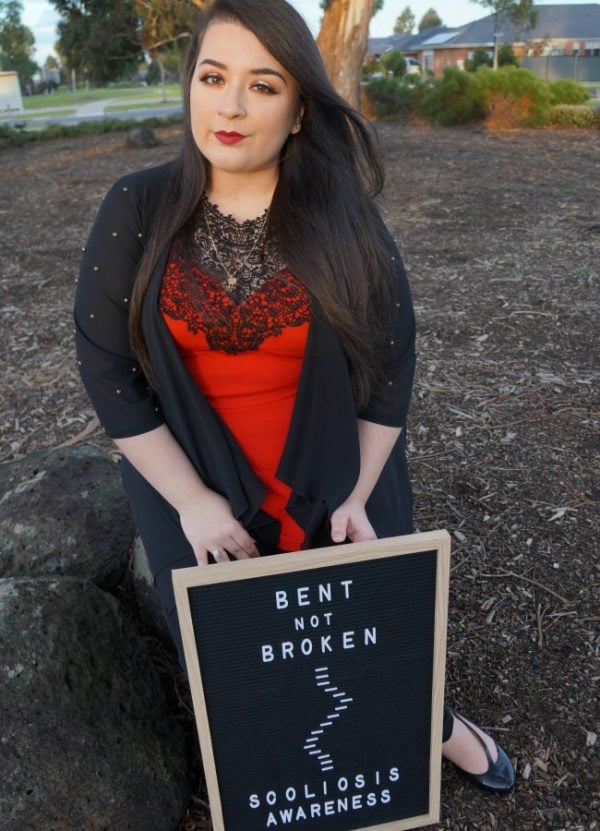
I first became aware of my condition when I was 15 years old.
My mother was constantly pointing out a strange hump on one side of my back, and I was constantly dismissing it. (I have always been overweight, so I assumed it was fat.)
She continued persisting until I decided to go to the doctors and ask for an x-ray. Just a few days later I received my results – scoliosis.
I had no idea what it meant, nor was I aware how it would impact my life in the years to come.
What is scoliosis?
Scoliosis is “an abnormal lateral curvature of the spine”. In simple terms: instead of your spine being straight, it’s bent or curved. The severity can vary person to person, and it’s estimated that between one and four per cent of the population have it.
There are no specific known causes for scoliosis, meaning that it’s possible for anyone to have the condition. There are different types of scoliosis, although the most common is Adolescent Idiopathic scoliosis – occurring during adolescence and being associated with growth.




Top Comments
I vaguely remember being screened in primary school in the 80's.
But my chiropractor noticed scoliosis in my daughter at 12 - it was not picked up by earlier chiropractor she has been seeing for years.
She is currently under going treatment with a back brace and exercise physiology, very little of which is covered by medicare or health fund.